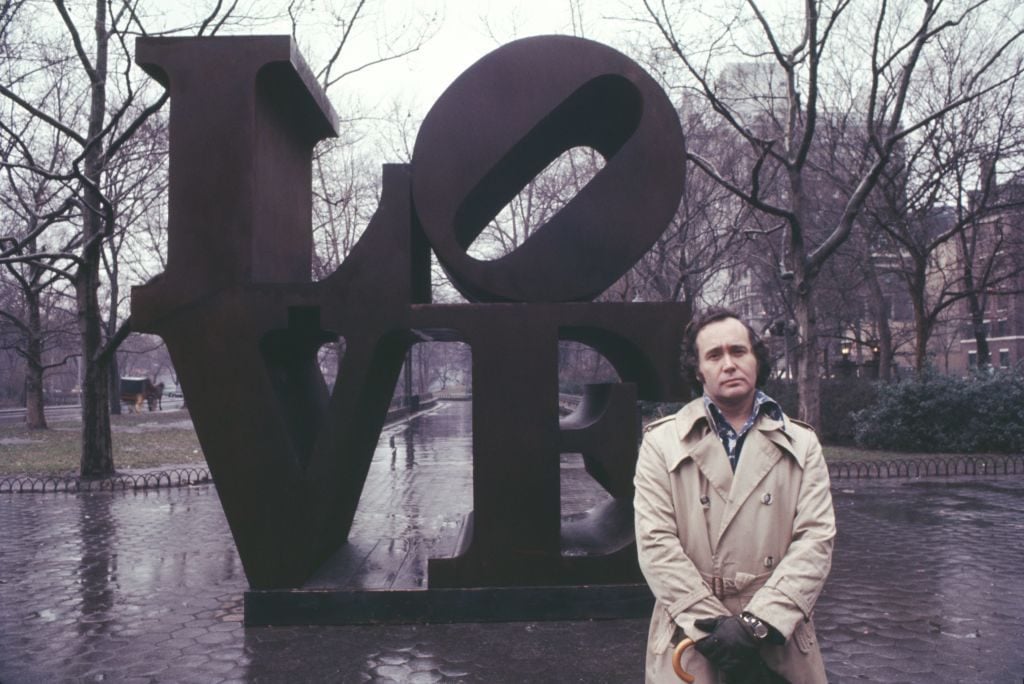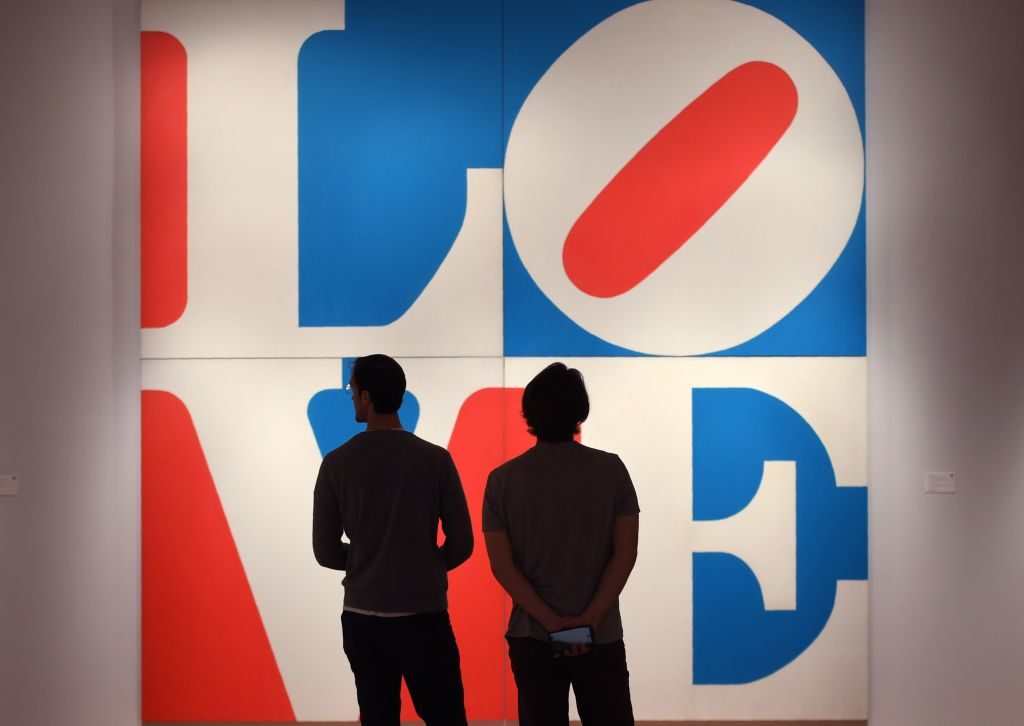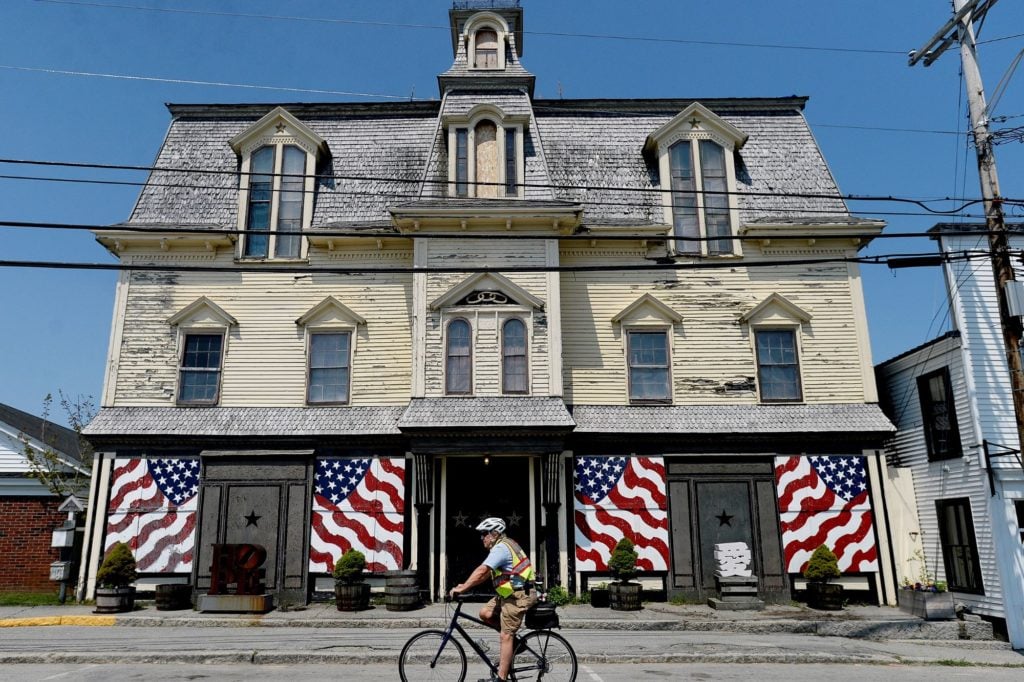Law & Politics
Robert Indiana’s Estate Has Reached an Agreement With His Longtime Financial Backer After a Bitter Three-Year Legal Fight
Several other lawsuits tied to the late artist's estate remain in place, however.

Several other lawsuits tied to the late artist's estate remain in place, however.

Eileen Kinsella

A bitter, years-long legal dispute over the legacy of famous Pop artist Robert Indiana has come to an end. The artist’s estate, the Star of Hope Foundation, which the artist established before his death, and the Morgan Art Foundation, which holds the copyright to some of Indiana’s most famous works, have agreed to drop their overlapping claims and counterclaims.
In addition to dismissing the litigation, the parties went even further, agreeing to mint a partnership in order to jointly promote the artist’s work and foster growth in his market. The precise terms of the agreement were not disclosed.
The dispute stretches back to May 2018, the month of Indiana’s death. The Morgan Art Foundation filed a federal lawsuit against art seller Michael McKenzie and his editions company American Image Art, as well as the artist’s caretaker, Jamie Thomas, alleging that they had isolated Indiana, taken advantage of him, and produced unauthorized reproductions of his work.
(As an example, Morgan pointed to BRAT, a monumental sculpture commissioned by a Wisconsin sausage company that was a twist on Indiana’s famous “LOVE” motif. Thomas denied wrongdoing and the editions company said it was operating on Indiana’s authority.)

Robert Indiana’s The Great American Love (Love Wall). Photo: Timothy A. Clary/AFP/Getty Images.
Luke Nikas, the attorney who represented the Morgan Foundation, called the June 11 settlement “an excellent outcome for all involved” and said that Morgan “is thrilled to partner with Indiana’s non-profit foundation… in continuing its decades-long effort to promote and preserve the work of Robert Indiana.”
Attorney James Brannan, the estate’s representative, said: “The future is bright for the market and legacy of Robert Indiana, and the estate is pleased to have helped create this success.” He declined to comment further on the nature of the forthcoming collaboration with Morgan.
Since Indiana’s death and the resulting lawsuits, confusion has surrounded the artist’s market—and who, exactly, has authority over it. Of the 29 works estimated at over $50,000 that have hit the auction block in the past year and a half, 10 failed to sell, seven exceeded their high estimates, and the rest sold within or below expectations, according to the Artnet Price Database.
Indiana is best known for his iconic LOVE sculpture, with a tipped “O” that became one of the most reproduced works of art in the modern era. Indiana, who changed his name from Clark, was already enjoying critical and market success when he debuted his LOVE series at the Stable Gallery in New York in 1964.
But LOVE became something of a double-edged sword for the artist. Despite the fact that the image made him world-famous and was reproduced on 330 million postage stamps, it was also reconfigured in countless other forms that he never authorized—or profited from.
The Morgan Art Foundation holds the copyright for the artist’s renowned “LOVE” series. The Star of Hope Foundation is planning to turn the artist’s home in Maine into a museum that will celebrate his life and work.
“We were happy to be part of the conversations that facilitated this agreement,” Star of Hope Foundation chairman Larry Sterrs said in a statement. “The Star of Hope looks forward to our partnership in the market with Morgan and accelerating work on our mission.”

Robert Indiana’s Vinalhaven home, Star of Hope. May, 2018. Staff photo by Shawn Patrick Ouellette, Portland Press Herald via Getty Images.
The legal trouble is not entirely over, however. Litigation between the Morgan Art Foundation and McKenzie is still pending.
McKenzie, who holds a contract from 2008 to produce and sell works based on Indiana’s “HOPE” sculpture, did not immediately respond to request for comment. In a statement to the New York Times, he said he remained open to an agreement with both parties but would also consider challenging the settlement. “I can take this apart,” he told the newspaper.
Also pending is a case brought by Maine’s attorney general, who claims the estate paid excessive legal fees during litigation. That lawsuit contends $3.7 million paid to four law firms and about $400,000 collected by the estate’s personal representative were excessive.

Robert Indiana, Star of Hope, Red/Blue/ White/ Gold (2013).
Photo: via artnet/ Rosenbaum Contemporary.
In 1978, disillusioned with the New York art world and worn down by harsh criticism of his work, Indiana retreated to Vinalhaven, an island off the coast of Maine, which is only reachable via an hour-long ferry ride. He took up residence in an 1870s-built lodge known as the Star of Hope (now the namesake of his nonprofit), which was formerly used by an international fraternal organization known as the Independent Order of Odd Fellows.
In the two decades before his death, Indiana saw his fortune and critical reception begin to change. A wave of exhibitions helped broaden the public’s understanding of Indiana’s work, which included far darker interpretations of the American dream. In 2013, he was the subject of a critically acclaimed retrospective at the Whitney Museum of American Art in New York.